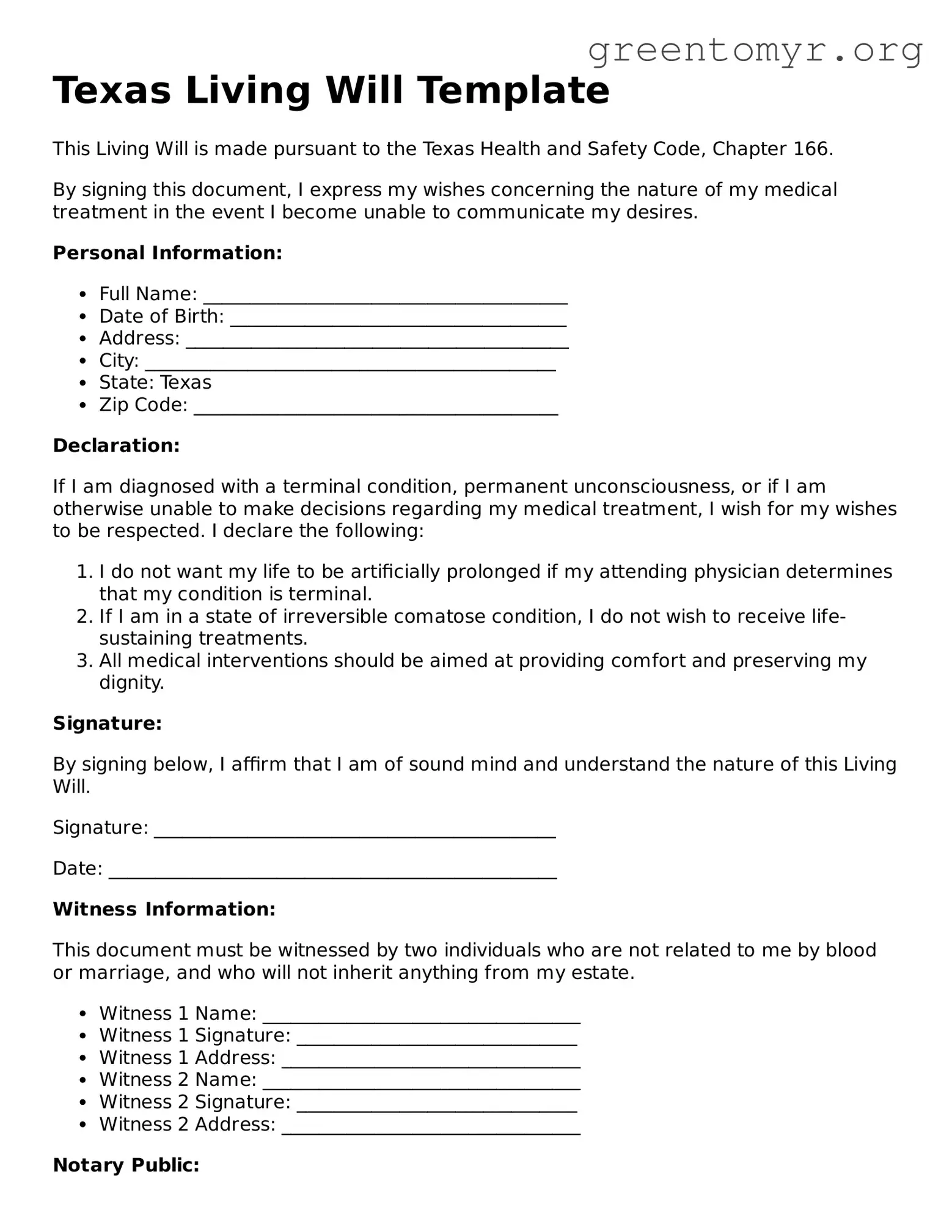Texas Living Will Template
This Living Will is made pursuant to the Texas Health and Safety Code, Chapter 166.
By signing this document, I express my wishes concerning the nature of my medical treatment in the event I become unable to communicate my desires.
Personal Information:
- Full Name: _______________________________________
- Date of Birth: ____________________________________
- Address: _________________________________________
- City: ____________________________________________
- State: Texas
- Zip Code: _______________________________________
Declaration:
If I am diagnosed with a terminal condition, permanent unconsciousness, or if I am otherwise unable to make decisions regarding my medical treatment, I wish for my wishes to be respected. I declare the following:
- I do not want my life to be artificially prolonged if my attending physician determines that my condition is terminal.
- If I am in a state of irreversible comatose condition, I do not wish to receive life-sustaining treatments.
- All medical interventions should be aimed at providing comfort and preserving my dignity.
Signature:
By signing below, I affirm that I am of sound mind and understand the nature of this Living Will.
Signature: ___________________________________________
Date: ________________________________________________
Witness Information:
This document must be witnessed by two individuals who are not related to me by blood or marriage, and who will not inherit anything from my estate.
- Witness 1 Name: __________________________________
- Witness 1 Signature: ______________________________
- Witness 1 Address: ________________________________
- Witness 2 Name: __________________________________
- Witness 2 Signature: ______________________________
- Witness 2 Address: ________________________________
Notary Public:
State of Texas
County of _______________
On this ____ day of __________, 20____, before me personally appeared, known to me to be the person who signed this Living Will.
Notary Signature: ____________________________________
Notary Public, State of Texas
